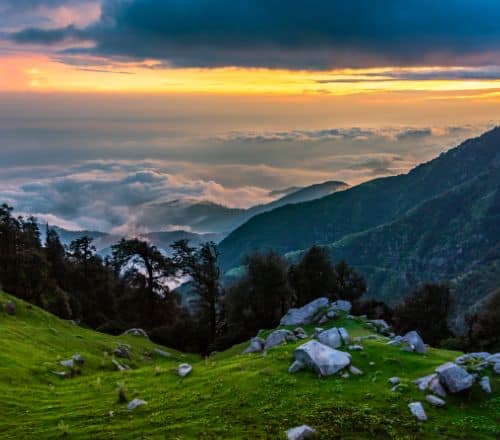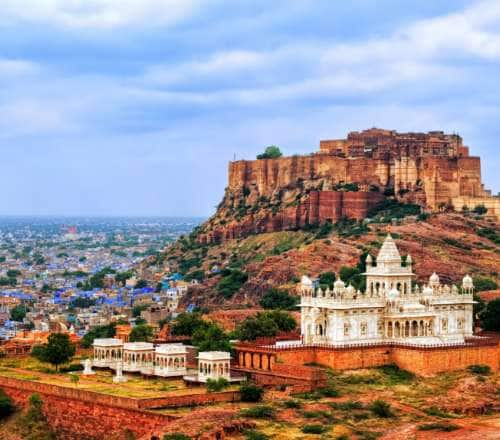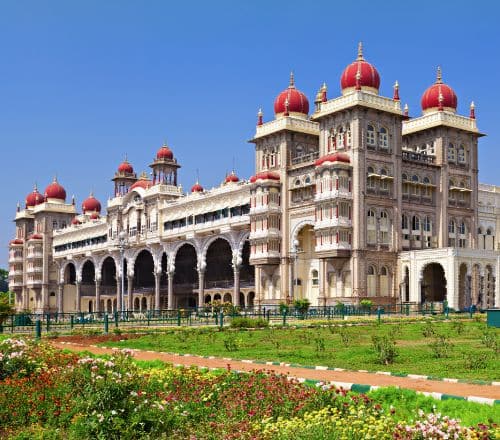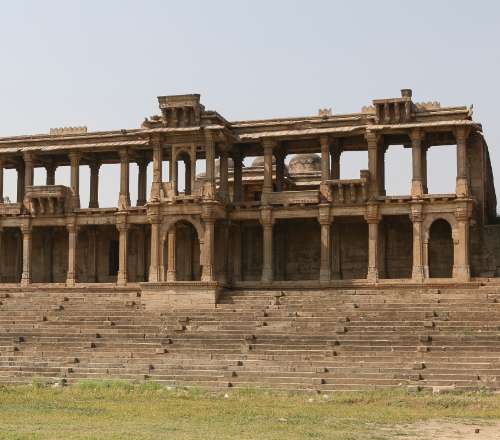Stay logged in to proceed with bookings, orders and offers.
On changing the terminal, you will loose items in your cart. Are you sure you want to change your terminal?
A personal account of my experience at the International Yoga Festival
Widely regarded as the cradle of civilisation, India enjoys a reputation for being the epicentre of wisdom and enlightenment. Among the many jewels that India has bestowed on the world, yoga shines like none other.
Yoga, which is best known for its asanas, is a way of life. It is a holistic lifestyle that includes asana, pranayama, dharana and dhyana. It is regarded as a way of life because it includes not only physical postures but also ethical principles, breathing exercises, and meditation. Many people around the world have adopted this holistic approach to living as a guiding principle for living a fulfilling life. In recent years, the world has become more acquainted with this ancient science. UNESCO included yoga in its list of the intangible cultural heritage of humanity in 2016. Hence, it comes as no surprise that the international demand for yoga has skyrocketed.
Indian saints and sages have been practising yoga for millennia. However, Swami Vivekananda popularised a modern approach to yoga at the beginning of the 20th century by taking it to the West. This led to yoga finding a new following in the Western world where it was previously unknown. Its popularity demanded an innovative way to cherish it on a larger scale.
Read More
Read Less
I was keen to participate in a well-organised yoga event. My search for learning more about yoga and its benefits found a fulfilling end when I got to know about the International Yoga Festival, which is a week-long yoga festival annually celebrated in March. It was started by Parmarth Niketan Ashram in Rishikesh in 1999. The festival garnered immense popularity over the years and especially in 2010 when it coincided with the Kumbha Mela held in Haridwar.
The festival was announced from the 1st to the 7th of March. I enrolled for the week-long festival in early February 2020. The registration included food and lodging and cost me INR 18,000. It is advisable to register yourself in advance to avoid any last-minute hassles. I arrived in Rishikesh early in the morning from Delhi. While I had no doubts about the festival's arrangements, I was astounded by the scale of the organisation.
Located right on the banks of the River Ganga, Parmarth Niketan Ashram is the largest ashram in Rishikesh. The grounds open out into expansive green lawns, decorated with beautiful flower beds, leading you towards the rooms. Parmarth Niketan Ashram has over a thousand rooms to host festival attendees. As soon as I finished the check-in procedures, I moved into my tidy room. My room was quite spacious, with a window overlooking the turquoise waters of the River Ganga. There was also a western-style washroom attached to the room. Soon after getting fresh, I went for the programme orientation.
The programme was designed to include 70 hours of yoga with intervals. The first session began as early as 4:00 am. I missed it on the first day. Nevertheless, the course compensated me with lessons by fast-tracking my learning over the next two days. After 2.5 hours of the morning class, breakfast would be served. Then the classes would start once again. An hour between 12:30 pm to 1:30 pm was earmarked for lunch. After lunch, the classes would resume and finally end at 5:00 pm.
After classes, we would head for Ganga Ghat to participate in the evening aarti. The evening aarti along the banks of the holy Ganges is a spiritual experience like no other. Priests perform an elaborate aarti dedicated to the river in a picture-perfect setup. Many devotees also perform yagna on the banks of the river for their well-being. I attended the evening aarti every day to absorb energy that can be felt but not expressed.
After attending the aarti, we would return to the ashram to have dinner. After finishing dinner, we would dedicate around two hours to self-expression by sharing any of our talents. The lights would go out at 9:30 pm. The cycle would again start the next day at 4:00 am.
All of the guests' meals were taken care of by Parmarth Niketan Ashram. Breakfast, lunch, and dinner were all part of the meal. All of these were sattvic vegetarian meals. Sattvik food is typically made with fresh, natural, and whole ingredients that are easy to digest and free from preservatives and artificial flavours. Smoking and drinking are strictly prohibited at the ashram. The diet followed at the ashram helps keep the blood pressure and heartbeat at normal levels, thereby helping in keeping the mind and body relaxed.
On the first two days of the festival, I learned traditional yoga. The yogacharyas taught us ways to train our minds away from sensory pleasures to focus on inner peace. The next two days were spent learning contemporary yoga. This style focuses on infusing yoga into our busy lives. Focused mostly on stretching and exercising, this was all about physical fitness.
The next three days were an eye-opener. The course focused on teaching yoga based on the differences in male and female anatomy and psychology. A male and a female teacher enlightened all the students about how different yoga practices may benefit different genders in various ways. I ended up learning Kundalini Yoga, Iyengar Yoga, Kriya Yoga, and Power Vinyasa Yoga. Kundalini Yoga focuses on spiritual awakening; Iyengar Yoga is focused on alignment; Kriya Yoga is a spiritual practice; and Power Vinyasa Yoga emphasises fluid movement and breath coordination.
Additionally, the ashram also organised therapeutic yoga sessions. These sessions aimed at teaching the health benefits of asanas. The teachings included not just physical but also psychological and spiritual benefits of asanas. It improved my mental strength, brought clarity to my thoughts, and reduced stress.
Beyond the regular classes, I participated in many motivational and high-energy satsang. Satsang is a spiritual gathering where individuals come together to practice yoga and meditation, listen to teachings, and share their spiritual experiences. These satsang provided lessons on leading a simpler life. The chants and bhajan to the rhythm of the tabla and the mridang gave energy to everyone in the room. All of us would forget all our worries and give in to the blissful environment.
Indians usually have a basic understanding of yoga and the lessons were an extension of my knowledge of the things I had limited awareness of. However, for international participants who had engaged in a yogic practice for the first time, it was life-altering. Many participants expressed how the lessons opened their eyes to see the world through a new lens.
All seven days of the festival saw cultural performances after dinner. Participants could come up on stage to sing, dance, and showcase their talent the way they liked. I also got on stage after a long time to sing. It made me happy to see that I could entertain people and they encouraged me while I was at it.
Before the festival ended, I also made use of the acupuncture service at the ashram. The ashram also provided reiki lessons. Reiki is a form of energy healing that involves the transfer of healing energy to promote physical, emotional, and spiritual well-being. I took an introductory class on the same to understand more about it.
The International Yoga Festival is typically organised in the first three weeks of March at Parmarth Niketan Ashram in Rishikesh. The venue is well connected to all major cities of India by road. The nearest railhead is at Yog Nagri Rishikesh at a distance of about 17 km. The nearest airport is in Dehradun at a distance of 32 km. You can register for the event in advance at this link: https://internationalyogafestival.org/register/
India has become famous across the world for its scientific and artistic practice of yoga. It would be shameful not to appreciate yoga and reap its rewards. I would recommend you to attend the International Yoga Festival to understand how much more you can live in this very life.





The Adani One expressly disclaims all liability, direct and indirect, in respect to actions taken or not taken based on any or all the contents of this Blog. The Blog is an opinion of the contributor based on the collation of data from various sources and is provided only for information purpose. Adani One does not canvass, advertise, solicit, invite or induct for any product, merchandise, information, brand or any other materials mentioned in the Blog, nor does it obtain any monetary benefit from the same. Reader is advised to read and apply his/her intellect and discretion in this regard. Any Intellectual Property mentioned in this blog belongs to the rightful owner. We do not intent to claim any interest over the same.